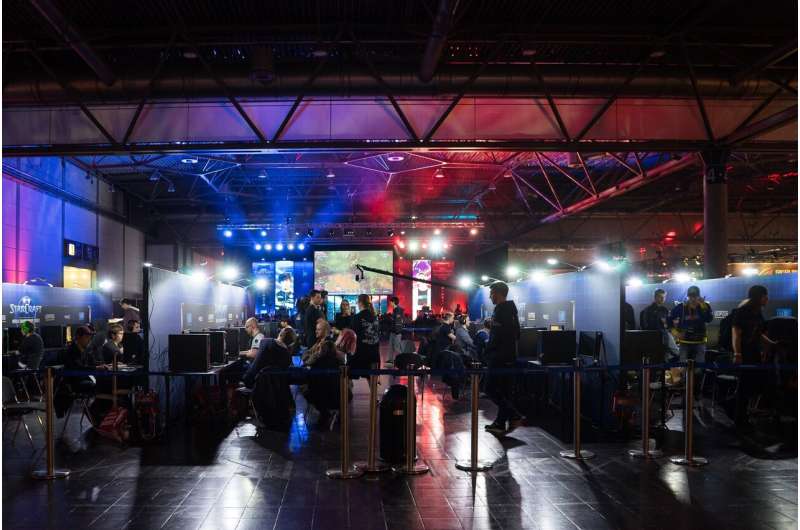Researchers say elite-level video gaming requires new protocols in sports medicine

cross the U.S. the esports athlete is a rising class of competitor in the highest collegiate and professional arenas. According to researchers in The Journal of the American Osteopathic Association, the field of sports medicine needs to catch up in order to address these players' particular needs.
Well beyond casual gamers, esport athletes practice three to 10 hours per day, perfecting their strategies and reflexes in their chosen game. While average novice players make approximately 50 action moves per minute, collegiate and pro athletes make 500-600 action moves per minute—or about 10 moves per second.
"Given esports are played while sitting, you'd think it would be literally impossible to get injured," says Hallie Zwibel, DO, director of sports medicine at New York Institute of Technology College of Osteopathic Medicine, who also oversees NYIT's Center for eSports Medicine, and is co-author on this study. "The truth is they suffer over-use injuries like any other athlete but also significant health concerns from the sedentary nature of the sport."
Not just video games
Dr. Zwibel says his past research found 56% of esports athletes experience eye fatigue, 42% report neck and back pain, 36% wrist pain, and 32% hand pain. However, only 2% of those reporting an ailment sought medical treatment. He adds that 40% of those surveyed get no physical activity in a given day.
Study authors note multiple health issues including blurred vision from excessive screen time, neck and back pain from poor posture, carpal tunnel syndrome from repetitive motion, metabolic dysregulation from prolonged sitting and high consumption of caffeine and sugar, and depression and anxiety resulting from internet gaming disorder.
"We're really just now realizing how physically and mentally demanding esports can be," says Dr. Zwibel. "Like any other college- or pro-level athlete, they need trainers, physical therapists and physicians to help them optimize their performance and maintain long-term health."
Dr. Zwibel considers professional League of Legends player Hai Lam, who retired at 26 due to chronic wrist pain, an example of the toll esports can take on an athlete's body. He hopes that tailored training regimens and appropriate medical care can help the next generation of esports athletes avoid similar outcomes.
Currently there are 80 U.S. colleges with varsity esports teams, with 22 offering scholarships. Colleges, universities and even high schools are adding more teams each year. At the professional level, the global esports industry earned more than $1 billion in 2019, with an audience of nearly 500 million.
"It's safe to say esports is no longer in its nascent stages," says Dr. Zwibel. "It's world-class competition and serious business. It's time we in sports medicine give these athletes the supports we know they need."
More information: Hallie Zwibel et al, An Osteopathic Physician's Approach to the Esports Athlete, The Journal of the American Osteopathic Association (2019). DOI: 10.7556/jaoa.2019.125



















